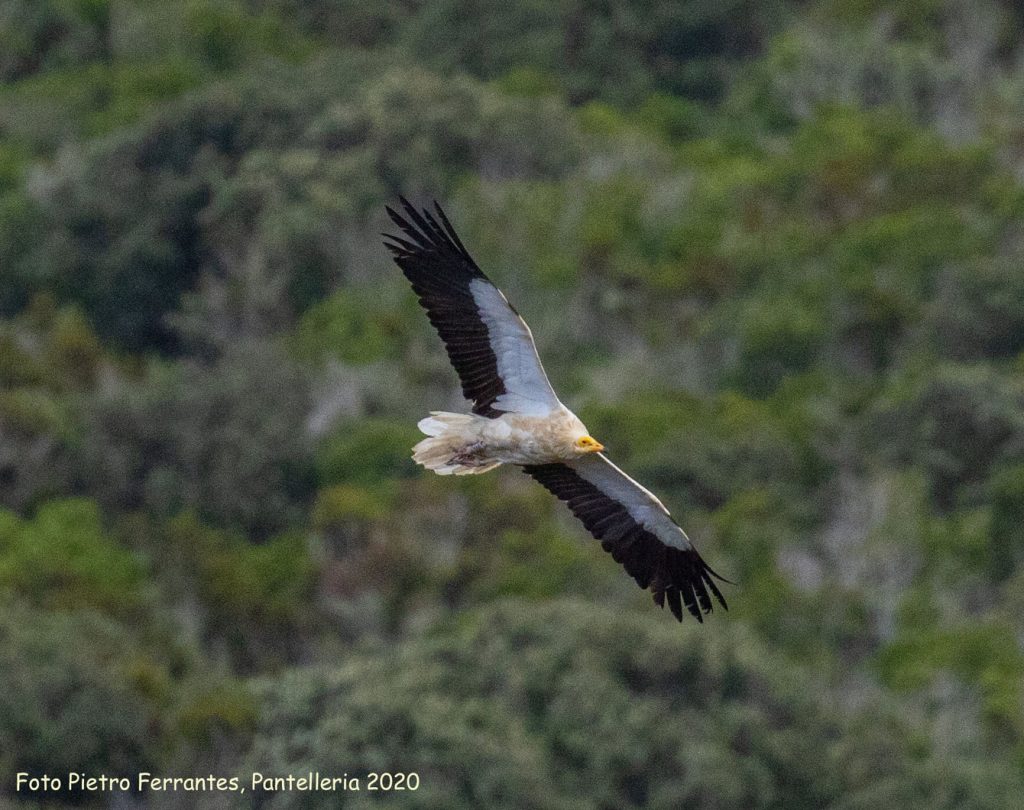
We have been closely following Egyptian Vulture Sara’s movements and behaviour in the wild with a GPS transmitter for the past six years. This spectacular Egyptian Vulture who comes from a captive breeding background has successfully returned to her wintering grounds in Niger for the fourth time!
Sara bred in captivity for conservation purposes
In 2015, the Egyptian Vulture Sara hatched at CERM Centro Rapaci Minacciati Association in Italy. In the same year, CERM released the young vulture into the wild on behalf of the Italian Ministry for the Environment. This action was part of an experimental release programme led by the CERM, in collaboration with us here at the Vulture Conservation Foundation (VCF) and the Egyptian Vulture Captive Breeding Network, testing procedures to get crucial data on the feasibility and relevance of captive-breeding and reintroduction projects with this species. Ahead of Sara’s release in Puglia in August 2015, she was fitted with a GPS transmitter, provided by us at the VCF.
Sara’s GPS travels throughout the years

Less than ten days after her release into the wild, Sara had moved away from the release site and reached Niger after travelling 3,980 km for 28 days. Sara stayed in Niger for most of the time until she returned to Italy for the first time four years later and has ever since been carrying out her annual autumn and spring migrations.
Sara is undoubtedly a vulture of records, even from the start. Amazingly, at the beginning of her first migration in 2015, she flew over the sea between Sicily and Libya, covering 550 km in a single day. Additionally, she inaugurated the route that passes through Pantelleria alongside her ‘friend’ Tobia. Furthermore, last year, observers saw and photographed Sara on the island in the company of a wild-hatched youngster who was following her; therefore, Sara, who hatched in captivity, was teaching the route to a younger Egyptian Vulture that hatched in the wild!
Sara migrates to Niger for the fourth time!

After the Egyptian Vulture spent the summer months in Basilicata exploring the entire region and making sporadic trips to Puglia, it was time to return to her wintering grounds. On 31 July, Sara left for the south and reached Sicily the following day, where she spent the entire month of August, moving mainly in the northwest of the island, in areas frequented by other Egyptian Vultures. Finally, on 31 August, she resumed her migration, crossed the sea and successfully reached Tunisia. During this journey, she flew over the island of Marettimo and, conditioned by the winds that day, took a more northerly route than the usual one to Cap Bon. This meant she flew at least 90 km more than the 130 km of the shorter route from Marettimo to Cap Bon. On 10 September, after a total journey of 3,000 km, Sara reached Niger. On the way back, she only stopped for overnight stops and only fed once, in a landfill in northern Algeria, fortunately, full of meat waste. Sara will spend the next seven months in Niger before returning to Italy next spring.
Her GPS transmitter is breaking all records for durability: it has been installed on her back for six years now, powered by a small solar panel. Several ornithologists have been able to observe and photograph this magnificent Egyptian Vulture in flight. The LIFE Egyptian Vulture project team and associates look over her via observations in Basilicata, Apulia, Calabria and Sicily.



